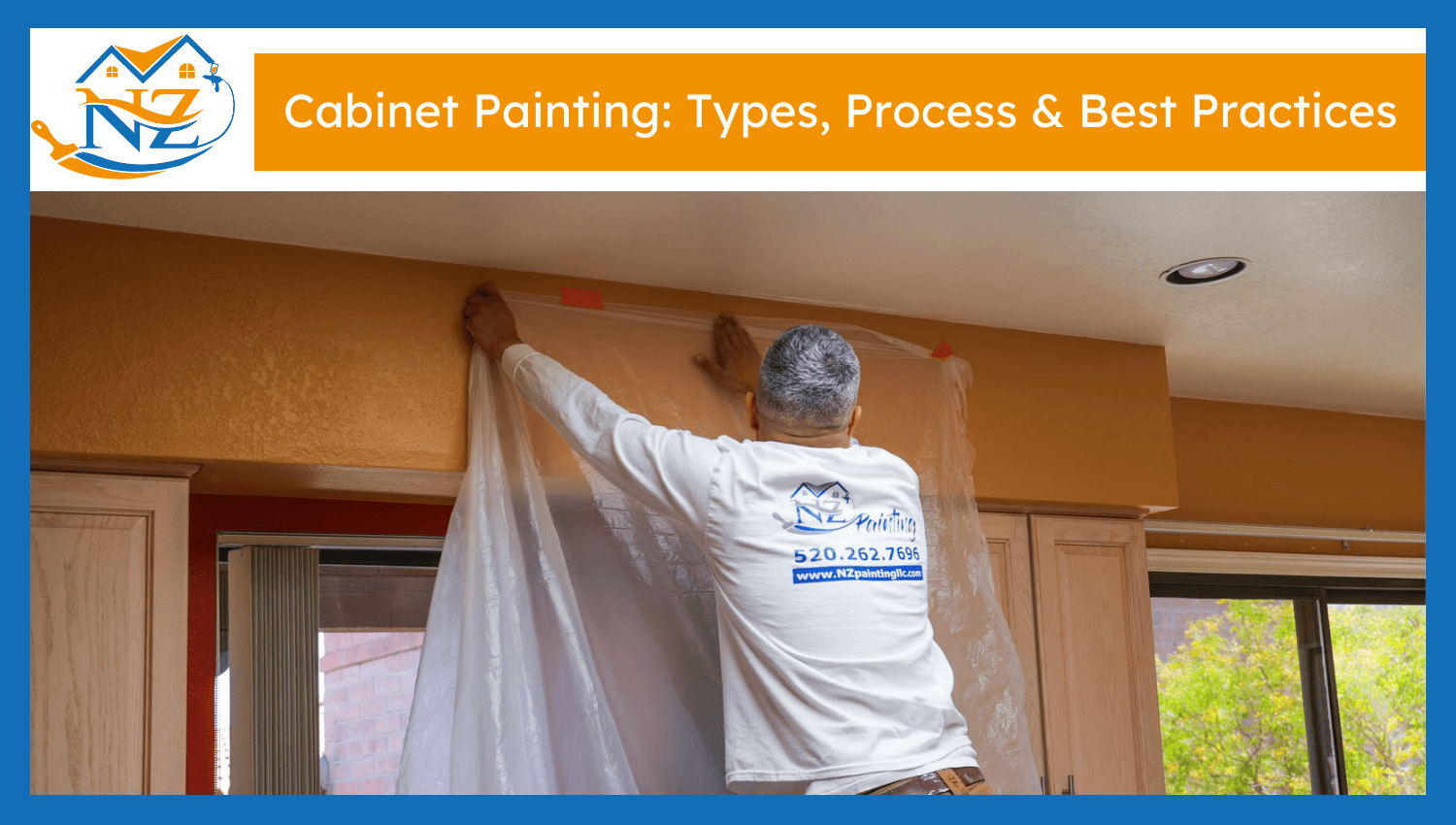

Cabinet painting refreshes the looks, style and feel of kitchens and bathrooms. A new color or finish can instantly change the feel of a space. Updating the look of your room with painted cabinets is more affordable than buying all new ones. New paint on the cabinets adds decoration and usefulness. They assist in keeping a space up-to-date or on-trend. This method works well with many different kinds of material and ensures lasting success. Cabinet painting enhances the value and attractiveness of a home if done properly. It is convenient and useful for fixing up your home, giving both beauty and strong construction in one purchase.
The following are the 4 common types of cabinet painting:
Wooden cabinets are sturdy and porous, which are used in kitchens and bathrooms. The wood can be painted with both latex and chalk paints. Sanding can make the wood look better and remove previous finishes. A high-quality primer ensures better sticking power and protects the surface from stains. Painting improves wooden cabinets’s appearance and helps to protect them against liquids, grease, and rubbing.
Metal cabinets are durable, moisture-resistant, and usually used in garages, kitchens, or rooms. Metal cabinet painting requires cleaning the surface with a degreaser before painting. A primer designed to prevent rust creates a great foundation. Spray paints and enamel paints form a sturdy and even finish. Always apply thin layers to your metal cabinets and allow each one to dry completely. Painting helps prevent rust and enhances the final look of the items you are painting.
Laminate cabinets have a shiny plastic layer that is bonded to a material like MDF. They are affordable and stain-resistant. Gently sand laminate surfaces to reduce the shine on their top layer before painting. Apply a primer specifically formulated for use on smooth surfaces. Use paints like acrylic or enamel for a stronger bond to the surface. Spray application offers even coverage. Don’t apply thick layers to prevent the paint from peeling. Painting laminate surfaces is an ideal option for updating your cabinets on a cost-effective budget.
Spray and hand painting are two types of painting used on all cabinets. The result of spray painting provides a perfect and professional appearance. It gives smooth coverage to the entire surface. It’s most effective when performed in areas with good airflow and ventilation. You can achieve greater detail when hand painting with a brush or roller. It works well for limited spaces or short painting jobs. Both methods are best used depending on what you’re painting, the equipment you have, and the space available. Each one requires a clean surface and the use of good paint.
Here are the 3 main steps that are involved in painting cabinets:
The first step is to remove all doors, handles, and hardware from the room. Make sure all surfaces are free of grease and dirt. Use sandpaper to remove old finishes and ensure a better grip for a new coat of paint. Apply painter’s tape around doors and windows to keep the paint off nearby surfaces. Apply a primer to ensure your finished paint coats stick well. Preparing surfaces properly ensures that the paint sticks well and stays for a long time.
Apply the paint in light, even coats. Apply paint to the corners with a brush and use a roller for the main surfaces. A sprayer is ideal for painting large surfaces using an even finish. Use thin layers to avoid any dripping or unevenness. Give each coat enough time to dry completely before going on to the next one. Gently sanding between each coat helps ensure a smooth and neat appearance.
A top coat ensures the paint is protected from everyday use. A suitable choice for cabinets is either polyurethane or a water-based sealer. This helps the paint resist damage and last longer. Apply in thin, even layers. Choose a brush or sprayer that best suits the type of surface you are painting. A high-quality top coat both increases the life of the paint and produces a perfect look.
Below are the 3 best practices for painting cabinets effectively:
Cabinets require paint that is both durable and easy to clean. Acrylic, latex, or enamel paints are all excellent options. Select a semi-gloss or satin finish for quick and effective cleaning. Apply a primer made for your specific type of cabinets before painting. Using high-quality paint reduces the need for repeated painting. It also resists moisture well and regular kitchen or bathroom use.
The paint needs to dry completely before you add another layer. Giving the paint enough time to fully cure improves the finished result. Do not use or move cabinets during this time. Wait until the paint has completely dried and cured before replacing the hardware. A clean and well-ventilated room is ideal for painting. A fully cured finish ensures that the cabinets can withstand regular use and cleaning.
Make use of a soft cloth moistened with mild soap when cleaning painted cabinets. Never apply strong chemicals or harsh tools to painted cabinets. Clean stains as soon as they happen to avoid harm. Apply any remaining paint to any damaged areas. Maintaining your cabinets helps them stay new-looking and prevents the paint from wearing off.